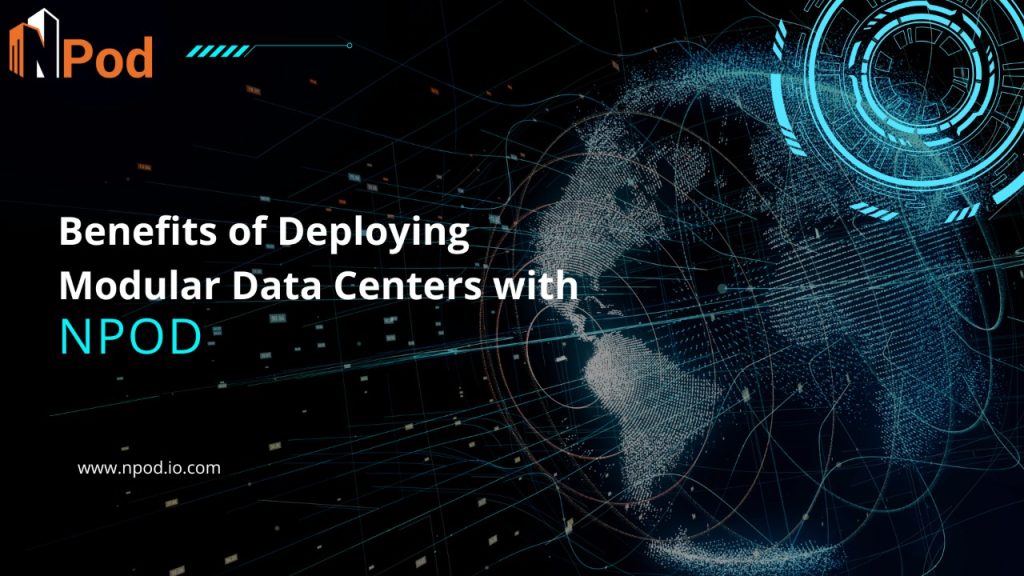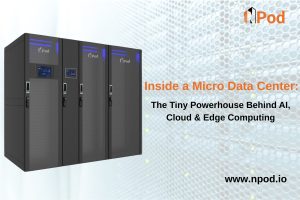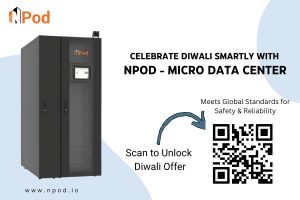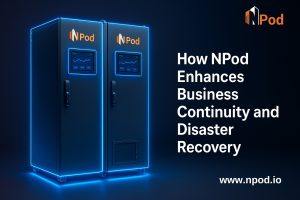Companies data processing and storage needs are expanding with them. Traditional data centers, which can be costly, inflexible, and slow to implement, often struggle to satisfy these expanding requirements. Here come modular data centers, namely Npod, which deliver a superior, faster, and more efficient way of scaling IT. Let’s explore the key benefits of modular data centers company owners and IT administrators should know in 2025.
What Are Modular Data Centers?
Independent components of a data center, referred to as modular data centers, can be scaled up or down quickly to meet demand and deployed rapidly. Modular data centers, unlike conventional brick-and-mortar data centers, are pre-fitted with power, cooling, and security systems, which allows them to come online faster and scale with your business.
Top Benefits of Using Modular Data Centers with Npod
- Rapid deployment
One of their strengths is that modular data centers can be installed in a matter of weeks, not months. Modular infrastructure such as Npod can be built and deployed within less than 60 days, whereas conventional data center construction can take between 12 and 24 months.
For essential digital services, this accelerated timeline ensures a faster go-to-market and fewer business disruptions.
- Adaptability and Expandability
The modular design of Npod allows businesses to begin small and expand as needed. Adding more modules is simple, regardless of whether you require additional processing, storage, or cooling power.
It is especially helpful for sectors like healthcare, communications, and finance that experience high data load boost rates.
- Economy of Cost
Modular data centers lower operating and capital expenditures.
- Shorter construction times result in lower initial costs.
- Energy-efficient cooling lowers power consumption.
- Remote monitoring reduces maintenance expenses.
The pay-as-you-grow model makes modular systems affordable for both small and large businesses.
- Mobility and Remote Deployment
Anywhere, even in difficult or isolated locations, Npod can be deployed. In a variety of settings, including deserts, high altitudes, and places with inadequate infrastructure, modular data centers are dependable.
This portability is perfect for applications in mining, defense, oil and gas, and rural telecommunications.
- Combining Resilience and Redundancy
Modular devices like Npod have built-in redundancy and high fault tolerance:
- Two power routes
- Systems for N+1 cooling
- Architecture for a secure network
These features guarantee 99.99% uptime, which is essential for any mission-critical IT configuration.
- Green Design & Sustainability
Sustainability is no longer optional. Modular data centers are a step in the right direction towards achieving modern organizations’ aim of reducing their carbon footprint.
Pod solutions often entail
- Low-emission cooling systems
- Recycled building materials
- Lower-energy power units
As such, they are an environmentally friendly solution for modern-day businesses.
- Compliance and Security
Physical and cyber-security measures will already be in place in pod units. These include:
- Biometric access control
- CCTV surveillance
- Fire suppression systems
- Zoning of a safe network
Based on the industry, they can also be easily aligned with compliance requirements such as as ISO 27001, HIPAA, PCI-DSS, and more.
Use cases of Modular Data Centers in the Real World
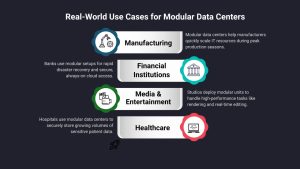
Manufacturing
Npod modular data centers allow manufacturers with varying workloads to increase production capacity during busy times and reduce it when demand declines
Financial Organizations
Modular data centers are used by banks and fintech businesses to create disaster recovery sites that can be quickly restored, guaranteeing constant data availability and safe cloud access.
Media & Entertainment
Creative studios and broadcasters often need high-performance computing on demand. Modular solutions like Npod help them easily add capacity for rendering and real-time data management.
Healthcare
Sensitive patient data is stored and accessed in huge amounts by hospitals and healthcare providers. A secure and regulated environment that can expand with the growth of healthcare data is provided by modular data centers.
Conclusion
Solutions like Npod are a great option for companies that want adaptable and future-proof data infrastructure because of the modular data center advantages they provide, which include quick deployment, scalability, cost savings, and improved security. IT managers and business owners may support the expansion of their organizations, simplify their operations, and get ready for any issues that may arise in 2025 and beyond by selecting modular solutions.
FAQs
- Which sectors benefit the most from modular data centers?
Because of their requirement for rapid deployment and dispersed infrastructure, sectors like government, education, healthcare, BFSI, telecommunication, and the military all have a lot to gain.
- How long does it take to install an NPod-style modular data center?
Unlike conventional buildings, Npod can be deployed in just 4–8 weeks, depending on the design.
- Do modular data centers remain permanently in use?
In consensus. Modular data centers are designed for long-term performance and can be fixed infrastructure, although they are also portable and flexible.
- What cooling does a modular data center offer compared to traditional data centers?
Most modules of a modular data center include built-in precision cooling equipment, either liquid or in-row cooling, designed for performance and efficiency.
- Can my modular data center be expanded in the future?
Yes. You can easily introduce additional compute, storage, or network nodes as needed because modular data centers are both vertically and horizontally scalable.
